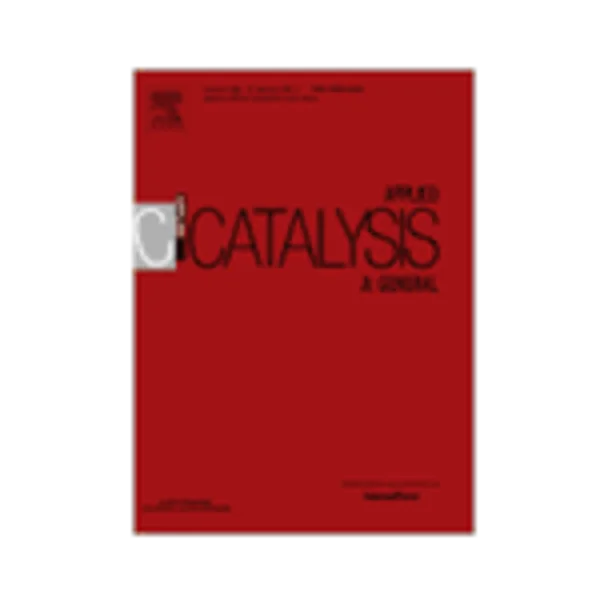-
autothermal partial oxidation of butanol isomers
جزئیات بیشتر مقاله- تاریخ ارائه: 1392/07/24
- تاریخ انتشار در تی پی بین: 1392/07/24
- تعداد بازدید: 972
- تعداد پرسش و پاسخ ها: 0
- شماره تماس دبیرخانه رویداد: -
the four isomers of butanol offer an interesting platform from which to study the reaction pathways of alcohols in an autothermal partial oxidation system, as they comprise one tertiary, one secondary, and two primary alcohols with the same number of carbon atoms. we demonstrate high yields of syngas or unsaturated molecules at contact times on the order of 10 ms, and investigate the reaction pathways of each isomer over rh, rhce, pt, and ptce catalysts for a range of carbon-to-oxygen (c/o) ratios.for each isomer, conversion to equilibrium syngas products is essentially complete at c/o = 0.8. as c/o ratio increases, the major product from the primary and secondary butanols switches to the corresponding carbonyl, producing butyraldehyde, isobutyraldehyde, and butanone from 1-butanol, isobutanol and 2-butanol, respectively. selectivity to the carbonyls approached 30–50% as c/o approached 2.0. dehydration to the corresponding butenes is relatively minor in comparison, representing less than 20% selectivity at c/o = 2.0. tert-butanol reacted differently, selecting mainly for the dehydration product isobutene. acetone was the main carbonyl product from tert-butanol, but selectivity to acetone was always ≤10%. global mechanisms in an autothermal reactor, based on pyrolysis, combustion and surface science literature, are proposed for each alcohol. surface chemistry likely accounts for much of the syngas formation and heat generation, while the carbonyls and alkenes may be formed primarily through homogeneous routes.
مقالات جدیدترین رویدادها
-
استفاده از تحلیل اهمیت-عملکرد در ارائه الگوی مدیریت خلاقیت سازمانی و ارائه راهکار جهت بهبود
-
بررسی تاثیر ارزش وجوه نقد مازاد بر ساختار سرمایه شرکت های پذیرفته شده در بورس اوراق بهادار تهران
-
بررسی تأثیر سطح افشای ریسک بر قرارداد بدهی شرکت های پذیرفته شده در بورس اوراق بهادار تهران
-
بررسی تأثیر رتبه بندی اعتباری مبتنی بر مدل امتیاز بازار نوظهور بر نقد شوندگی سهام با تأکید بر خصوصی سازی شرکت ها
-
تأثیر آمیخته بازاریابی پوشاک ایرانی بر تصویر ذهنی مشتری پوشاک ایرانی (هاکوپیان)
-
چگونه توانستم رفتارهای نادرست و ناشایست دانش آموزم محمد پایه اول ابتدایی ام را اصلاح کنم؟
-
تعیین پارامترهای ژئومکانیکی و تزریق پذیری تکیه گاه چپ ساختگاه سد کمال صالح اراک
-
جستاری پیرامون تجلی زن در آیینه ادبیات عرفانی
-
decision support systems in holistic planning of mutually impacting projects
-
diagonally invariant exponential stability and stabilizability of switching linear systems
مقالات جدیدترین ژورنال ها
-
مدیریت و بررسی افسردگی دانش آموزان دختر مقطع متوسطه دوم در دروان کرونا در شهرستان دزفول
-
مدیریت و بررسی خرد سیاسی در اندیشه ی فردوسی در ادب ایران
-
واکاوی و مدیریت توصیفی قلمدان(جاکلیدی)ضریح در موزه آستان قدس رضوی
-
بررسی تاثیر خلاقیت، دانش و انگیزه کارکنان بر پیشنهادات نوآورانه کارکنان ( مورد مطالعه: هتل های 3 و 4 ستاره استان کرمان)
-
بررسی تاثیر کیفیت سیستم های اطلاعاتی بر تصمیم گیری موفق در شرکتهای تولیدی استان اصفهان (مورد مطالعه: مدیران شرکتهای تولیدی استان اصفهان)
-
اثر متقابل تخصص حسابرس در صنعت و تمرکز مالکیت بر کارایی سرمایه گذاری
-
تأثیر ویژگی های صنعت صاحبکار بر کیفیت حسابرسی
-
بررسی پرداخت های الکترونیکی در دولت الکترونیک و تاثیر آن برحجم تقاضای پول
-
بررسی تاثیر اجرای سامانه عملیات و خدمات الکترونیک مالیاتی بر میزان اثربخشی عملکرد سازمان امور مالیاتی از دیدگاه ممیزین مالیاتی
-
investigating the energy efficiency of tex high energy derivatives with different carbon fuller nano structures under different temperature conditions by dft method




سوال خود را در مورد این مقاله مطرح نمایید :